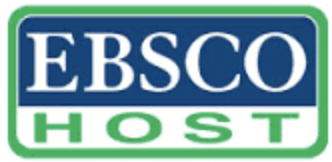Le lien entre l’investissement direct étranger, la dette extérieure et la croissance économique de l’Afrique du Sud
Mots-clés :
Afrique du Sud, Investissement direct étranger, Dette extérieure, Croissance économique, Retard distribué autorégressifRésumé
Objectif: Le niveau de la dette extérieure d’un pays et les tendances de la croissance économique sont considérés comme des facteurs impératifs pour attirer les investissements directs étrangers d’un pays. La plupart des pays en développement sont confrontés à des niveaux élevés de dette extérieure et à une croissance plus faible. En raison de ces préoccupations, l’Afrique du Sud fait partie des pays en développement qui attirent peu d’investissements directs étrangers. Alors que l’investissement est crucial pour la croissance économique, une augmentation de l’investissement direct étranger est donc bénéfique pour la croissance économique, en particulier dans les économies d’accueil. Ainsi, l’étude en question examine le lien entre l’investissement direct étranger, la dette extérieure et la croissance économique de l’Afrique du Sud, en utilisant des données de séries chronologiques secondaires couvrant les périodes de 1994 à 2021.
Méthode: Pour atteindre l’objectif de l’étude, l’étude a utilisé les techniques économétriques suivantes, les tests de racine unitaire, le test de cointégration à décalage distribué autorégressif, les tests de diagnostic et les tests de stabilité.
Résultats: Les résultats de la racine unitaire ont révélé que les variables sont I(0) et I(1). L’étude a distingué un lien à long terme entre l’investissement direct étranger, la dette extérieure et la croissance économique de l’Afrique du Sud au cours de la période d’étude.
Originalité/pertinence: L'étude contribue à la littérature existante sur l'investissement direct étranger, la dette extérieure et la croissance économique, et propose de nouvelles recommandations issues du contexte sud-africain de 1994 à 2021. Par conséquent, les analyses de cette étude sont importantes pour orienter les politiques sur l'investissement direct étranger, la dette extérieure et la croissance économique.
Téléchargements
Références
Adams, S. (2009). Foreign direct investment, domestic investment, and economic growth in Sub-Saharan Africa. Journal of policy modeling, 31(6), 939-949.
Adedoyin, F. F., Gumede, M. I., Bekun, F. V., Etokakpan, M. U., & Balsalobre-Lorente, D. (2020). Modelling coal rent, economic growth and CO2 emissions: does regulatory quality matter in BRICS economies?. Science of the Total Environment, 710, 136284.
Afzal, M., Farooq, M. S., Ahmad, H. K., Begum, I., & Quddus, M. A. (2010). Relationship between school education and economic growth in Pakistan: ARDL bounds testing approach to cointegration. Pakistan Economic and Social Review, 39-60.
Ali, K. H., Faki, S. M., & Suleiman, S. H. (2018). Determinants of foreign direct investment inflows in the Southern African Development Community (SADC) member countries. International Journal of Science and Business, 2(4), 616-623.
Anetor, F.O. (2020). Human capital threshold, foreign direct investment, and economic growth: evidence from sub-Saharan Africa. International Journal of Development Issues, 19(3), 323-337.
Asafo, S.S., & Matuka, A. (2019). External debt and economic growth in Ghana: A co-integration and vector error correction analysis. Theoretical and Practical Research in the Economic Fields, 10(1), 45-53.
Ayee, J.R. (2005). African Development Bank. Economic Research Working Paper Series, Public Sector Management in Africa, 1-56.
Babu, J. O., Kiprop, S., Kalio, A. M., & Gisore, M. (2015). Effect of domestic debt on economic growth in the East African community. American Journal of Research Communication, 3(9), 73-95.
Brooks, C. (2008). Introductory Econometrics for Finance. 2nd ed. United States of America: Cambridge University Press.
Brown, R.L., Durbin, J., & Evans, J.M. (1975). Techniques for testing the constancy of regression relationships over time. Journal of the Royal Statistical Society: Series B (Methodological), 37(2), 149-163.
Demena, B.A., & van Bergeijk, P.A. (2019). Observing FDI spillover transmission channels: evidence from firms in Uganda. Third World Quarterly, 40(9),1708-1729.
Dickey, D.A., & Fuller, W.A. (1979). Distribution of the estimators for autoregressive time series with a unit root. Journal of the American Statistical Association, 74(2), 427–431.
Emir, F., & Bekun, F.V. (2019). Energy intensity, carbon emissions, renewable energy, and economic growth nexus: new insights from Romania. Energy & Environment, 30(3), 427-443.
Fatoki, O., & Muoki, V. (2021). Effects of public debt on the economic growth of East African countries, 3(1), 178-193.
Gujarati, N., & Porter, C. (2009). Basic econometrics. New‐York: McGraw‐ Hill.
Jilenga, M.T., Xu, H., & Gondje-Dacka, I.M. (2016). The impact of external debt and foreign direct investment on economic growth: Empirical evidence from Tanzania. International Journal of Financial Research, 7(2), 154-162.
Johansen, S., & Juselius, K. (1990). Maximum likelihood estimation and inference on cointegration with application to the demand for money. Oxford bulletin of economics and statistics, 3(52), 169–210.
Joshua, U., Bekun, F.V., & Sarkodie, S.A. (2020). New insight into the causal linkage between economic expansion, FDI, coal consumption, pollutant emissions and urbanization in South Africa. Environmental Science and Pollution Research, 27, 18013-18024.
Karadam, D.Y. (2018). An investigation of nonlinear effects of debt on growth. The Journal of Economic Asymmetries, 18, e00097.
Kharusi, S.A., & Ada, M.S. (2018). External debt and economic growth: The case of emerging economy. Journal of economic integration, 33(1), 1141-1157.
Kok, R., & Ersoy, B.A. (2009). Analyses of FDI determinants in developing countries. International Journal of Social Economics, 36(1/2), 105-123.
Krugman, P. (1988). Financing vs. forgiving a debt overhang. Journal of development Economics, 29(3), 253-268.
Li, X., & Liu, X. (2005). An Increasingly Endogenous Relationship. World Development, 33(3), 393–407.
Liu, T.Y., & Lee, C.C. (2018). Testing explosive behaviour of public debt in OECD countries. Journal of International Trade and Economic Development, 27(7), 761–791.
Maboa, H.M., & Ncanywa, T. (2020). Determinants of foreign direct investment in South Africa. International Conference on Public Administration and Development Alternatives (IPADA).
Magubu, R., Maisonnave, H., Chitiga, M., & Decaluwé, B. (2015). Real effects of public debt on national development. Financial and Fiscal Commission.
Majam, T. (2017). Challenges in public debt management in South Africa. Administration Publication, 25(3), 195-209.
Megersa, K., & Cassimon, D. (2015). Public debt, economic growth, and public sector management in developing countries: Is there a link? Public Administration and Development, 35(5), 329-346.
Mkombe, D., Tufa, A.H., Alene, A.D., Manda, J., Feleke, S., Abdoulaye, T., & Manyong, V. (2021). The effects of foreign direct investment on youth unemployment in the Southern African Development Community. Development Southern Africa, 38(6), 863-878.
Morgan, R.E., & Katsikeas, C.S. (1997). Theories of international trade, foreign direct investment, and firm internationalization: a critique. Management Decision, 35(1), 68-78.
Ndubuisi, P. (2017). Analysis of the impact of external debt on economic growth in an emerging economy: Evidence from Nigeria. African Research Review, 11(4), 156-173.
Nkuna, O.B. (2017). Intra-Regional Foreign Direct Investment in SADC: South Africa and Mauritius Outward Foreign Direct Investment. African Economic Research consortium, 1-45.
Okunola, A.M. (2016). Nigeria: positioning rural economy for implementation of sustainable development goals. Turkish Journal of Agriculture-Food Science and Technology, 4(9), 752-757.
Pesaran, M.H., Shin, Y., & Smith, R.J. (2001). Bounds testing approaches to the analysis of level relationship. Journal of Applied Econometrics, 16(3), 289–326.
Phillips, P.C.B., & Perron, P. (1988). Testing for unit root in regression. Biometrika, 75, 335–346.
Sandow, J.N., Oteng-Abayie, E.F., & Duodu, E. (2022). External debt and economic growth in Sub-Saharan Africa: does heterogeneity in the quality of public sector management make a difference? Heliyon, 8(9), e10627.
Senadza, B., Fiagbe, K., & Quartey, P. (2017). The effect of external debt on economic growth in Sub-Saharan Africa. International Journal of Business and Economic Sciences Applied Research (IJBESAR), 11(1), 61-69.
Serrão, A. (2016). Impact of public debt on economic growth in advanced economies. International Journal of Managerial Studies and Research (IJMSR), 4(2), 70-76.
Shkolnyk, I., & Koilo, V. (2018). The relationship between external debt and economic growth: Empirical evidence from Ukraine and other emerging economies. Investment Management and Financial Innovations, 15(1), 387-400.
Solomon, N. (2017). An empirical assessment of the impact of foreign debt on foreign direct investment in Zambia (1980-2015) (Doctoral dissertation, school of Humanities and Social Sciences, University of Zambia).
Tanna, S., Li, C., & De Vita, G. (2018). The role of external debt in the foreign direct investment–growth relationship. International Journal of Finance & Economics, 23(4), 393-412.
Turan, T., & Yanıkkaya, H. (2021). External debt, growth and investment for developing countries: some evidence for the debt overhang hypothesis. Portuguese Economic Journal, 20(3), 319-341.
Udi, J., Bekun, F.V., & Adedoyin, F.F. (2020). Modeling the nexus between coal consumption, FDI inflow and economic expansion: does industrialization matter in South Africa? Environmental Science and Pollution Research, 27, 10553-10564.
Vijayakumar, N., Sridharan, P., & Rao, K.C.S. (2010). Determinants of FDI in BRICS Countries: A panel analysis. International Journal of Business Science & Applied Management, 5(3), 1-13.
Téléchargements
Publié
Numéro
Rubrique
Licence
© Dintuku Maggie Kgomo, Ndivhuho Eunice Ratombo, Thabiso Wendy SERAKWANA 2025

Cette œuvre est sous licence Creative Commons Attribution - Pas d'Utilisation Commerciale - Pas de Modification 4.0 International.
Les auteurs qui publient dans cette revue acceptent les termes suivants :
- Les auteurs conservent le droit d'auteur et accordent à la revue le droit de première publication, l'ouvrage étant alors disponible simultanément, sous la licence Licence d’attribution Creative Commons permettant à d'autres de partager l'ouvrage tout en en reconnaissant la paternité et la publication initiale dans cette revue.
- Les auteurs peuvent conclure des ententes contractuelles additionnelles et séparées pour la diffusion non exclusive de la version imprimée de l'ouvrage par la revue (par ex., le dépôt institutionnel ou la publication dans un livre), accompagné d'une mention reconnaissant sa publication initiale dans cette revue.
- Les auteurs ont le droit et sont encouragés à publier leur ouvrage en ligne (par ex., dans un dépôt institutionnel ou sur le site Web d'une institution) avant et pendant le processus de soumission, car cela peut mener à des échanges fructueux ainsi qu'à un nombre plus important, plus rapidement, de références à l’ouvrage publié (Voir The Effect of Open Access).























